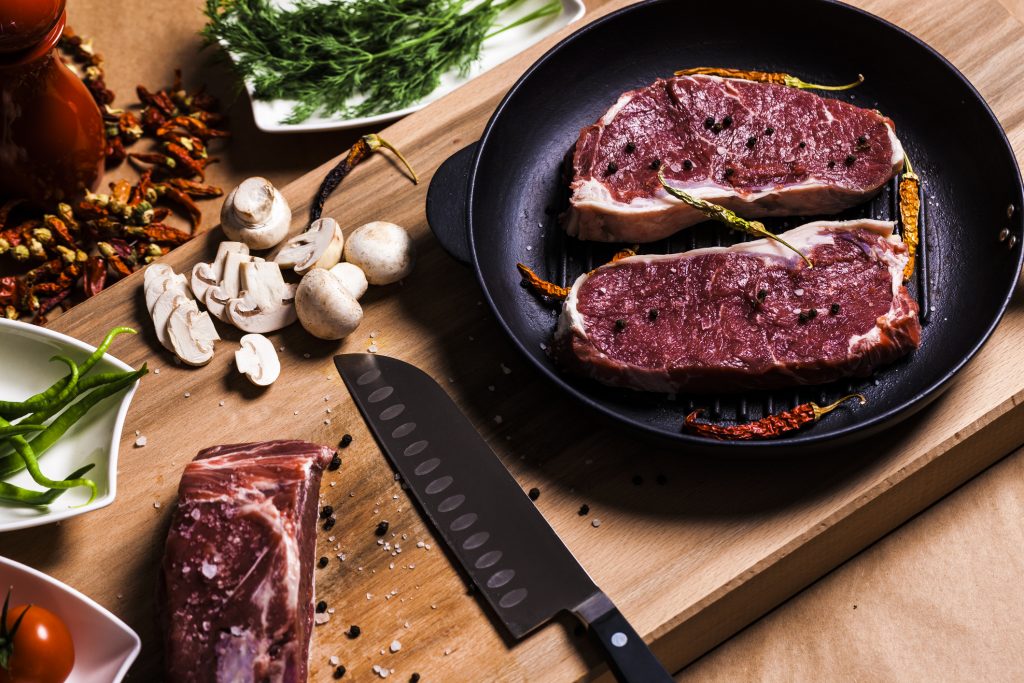Are You Getting Enough Iron?

Iron is a key nutrient in the body that’s needed to keep you feeling awake, strong, and capable of charging through your day. How does one mineral do so much? Iron helps to make hemoglobin, a protein in red blood cells that carries oxygen between the lungs and tissues throughout the body. Without enough iron, you will start to feel the impact of less oxygen and this can make you feel downright miserable.
Iron deficiency anemia is common in the U.S. with 2% of men, 9-12% of non-Hispanic white women, and up to 20% of black and Mexican-American women being anemic. In fact, it’s a common nutrient deficiency worldwide in both adults and children. Common symptoms of having low iron include: fatigue/low energy, shortness of breath, dizziness, cold/numb hands or feet, weak muscles, exercise intolerance, irregular heartbeat, paleness or yellowing of the skin and difficulty concentrating.
You don’t need to have iron deficiency anemia to feel the effects of low iron in the body. There is an iron-storage protein known as ferritin that you can think of as your iron bank account. Ferritin stores iron in the body and releases it in a controlled way when it’s needed. This serves as a buffer against iron deficiency, so if you have low ferritin, you are more likely to experience many of the same symptoms. Some of these risk factors of developing iron deficiency anemia include being on a strict vegetarian/vegan diet, exercising excessively, menstruating women (especially those who experience a heavy monthly period), pregnant or breastfeeding women, childhood/adolescent obesity, surgery, and blood donation.
Dietary iron comes in two forms: heme and non-heme. Heme refers to iron found in animal foods such as red meat. Non-heme is the iron found in plants such as spinach. The bioavailability of, or ability to absorb, iron is different depending on the type you are eating. Non-heme iron is more difficult to absorb and can be more easily blocked from absorption by inhibitors such as calcium, fiber, tea, coffee, and wine. When eating plant-based sources of iron, it is best to pair them with a food that is high in vitamin C because it enhances absorption. The ideal way to get iron in your diet is through heme sources.
Here are my top dietary suggestions for increasing iron intake:
- If you’re not vegetarian, increase your intake of red meat, preferably grass-fed. Everyone’s protein needs are different, but if you aim for a burger or steak the size of the palm of your hand 2-3 days a week, this will provide an excellent source of well absorbed iron.
- If you are vegetarian, add clams into your meal rotation. 10 small clams contain over 100% of the Daily Value (DV) for iron and they are also an excellent source of B12, both common nutrient deficiencies among vegetarians.
- If you are vegan, cooked soybeans pack an iron-rich punch. ½ cup of cooked mature soybeans provide about 50% of DV for iron. Always be sure to get non-GMO/organic soy, as most of the soy sold today is genetically modified.
- Up the vitamin C. If you are eating non-heme iron, such as soybean, pumpkin seeds, spinach, white beans, kidney beans, and blackstrap molasses, try to include a food rich in vitamin C at the same meal. Best sources include red bell peppers, kiwi, orange, strawberries, green bell pepper, Brussels sprouts, broccoli, and cauliflower.
- Cook in cast-iron. The foods you cook will absorb some of the iron from the pan. Yes, it’s that simple!
One last consideration: too much iron, or iron overload, can be dangerous. High levels can damage organs, increase inflammation, and may be linked to diseases such as type 2 diabetes and even Alzheimer’s. A rare genetic condition, hemochromatosis, puts some people at higher risk for developing iron overload, but anyone who gets too much iron can be at risk.
If you are concerned you have low levels of iron, ask your doctor to check an Iron Profile which includes Serum Iron, Ferritin, Transferrin and TIBC. Also request a CBC (Complete Blood Count) which contains hemoglobin.

